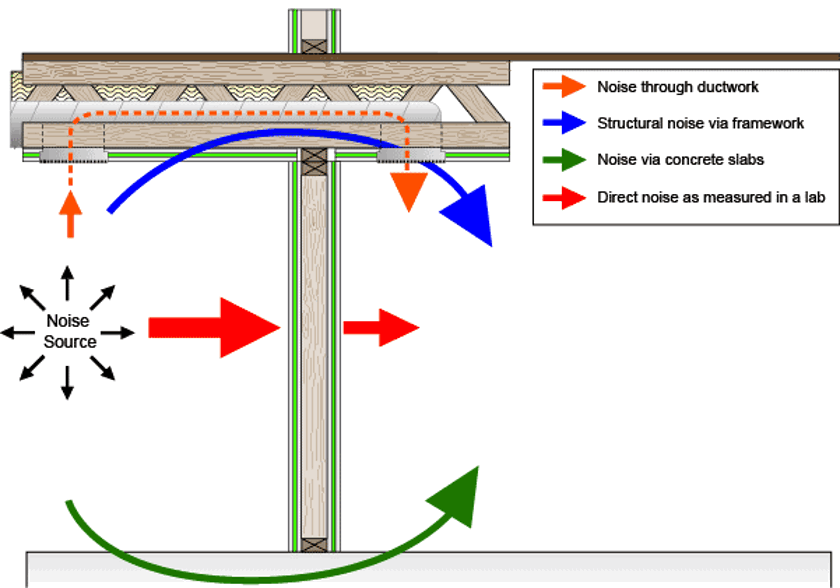Acoustic Design – Best Practice

Acoustic Design – Best Practice
Achieving Part E compliance can often be one of the most concerning areas of the building regulations.
There are 3 main principles for good acoustic design which should be followed:
1. Mass
Mass is needed to absorb the vibrations in which sound makes. The denser the materials are, the more sound they can absorb.
2. Spacing
If the whole system is joined together, the sound vibrations could pass all the way through.
As a rule of thumb, we would recommend to half fill the air gap with insultation so that the sound can be absorbed and can dissipate.
3. Flanking
Ensure that there is a flanking barrier for the sound to pass through. As shown below, this stops the sound from travelling through areas such as the concrete slabs & frameworks (as highlighted by the blue and green arrows).

Do’s & Don’ts of Acoustic Design
Share
